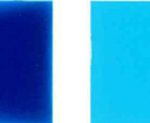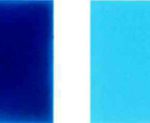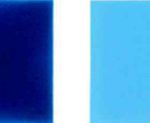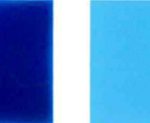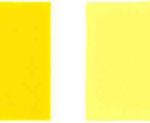Pigment Blue 15:2
Pigment Blue 15:2, also known as Phthalocyanine Blue, is a vibrant, intense blue colorant widely used in inks, paints, coatings, and plastics. Known for its excellent lightfastness, chemical stability, and non-toxic properties, this synthetic pigment delivers rich, durable color, making it a preferred choice in both industrial and artistic applications. Its versatility allows for use in a wide range of products, from automotive finishes to cosmetics. With its deep blue hue and strong color performance, Pigment Blue 15:2 provides a consistent and long-lasting color solution for various manufacturing needs.
Technical parameters of Pigment blue 15:2
| Barvni indeks št. | Pigment blue 15:2 |
|---|---|
| Številka CAS | 12239-87-1 |
| Številka EU | 205-685-1 |
| Chemical Group | Phthalocyanine |
| Molekularna teža | 611.52 |
| Molekularna formula | C32H15CiCuN8 |
| PH vrednost | 7.0 |
| Gostota | 1.5 |
| Absorpcija olja (ml / 100 g)% | 50 |
| Lahka hitrost | 8 |
| Toplotna odpornost | 200 (°C) |
| Vodoodpornost | 5 |
| Odpornost na olje | 5 |
| Odpornost proti kislini | 5 |
| Odpornost proti alkaliji | 5 |
| Benzene Resistance | 5 |
| Ketone Resistance | 5 |
| Soap Resistance | 5 |
| Bleeding Resistance | 5 |
| Migration Resistance | 5 |
| Density ( g/cm3) | 1.5 |
| Moisture (%) | ≤1.0 |
| Water Soluble Matter (%) | ≤1.0 |
| Oil Absorption (ml/100g) | 35-45 |
| Electric Conductivity (us/cm) | ≤400 |
| Residue on 325 mesh sieve (Wet method)PPM | ≤80 |
| Magnetic on 325 mesh sieve (Wet method)PPM | ≤8 |
| PH Value | 6.5-7.5 |
| color |  |
| Molekularna struktura | 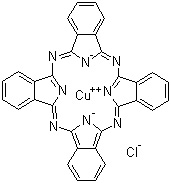 |
Handling and storage
Handling:
Usual precautions for nuisance dust should be observed.
Protection against fire and explosion:
The product is non-flammable
Storage:
Store in roofed places at room temperature Keep containers tightly sealed.
Flammability Class: nor applicable.
Fizikalne in kemijske lastnosti
Appearance: blue powder Odor: mild
Melting point:460℃ Relative density:1.36-1.80
Decomposition: None Flammability: see 7 handling
Molecular formula:C32H16CuN8 Molecular Weight: 576.07
Tinting strength: 95-105% of the standard Volatile matter at 105℃: 2.5%max
Soluble matter in water: 1.5% max Oil absorption:28-62%
Fastness to light:7-8 Fastness to heat(℃):200
Bleeding resistance water: 5 Bleeding resistance linseed oil:5
Bleeding resistance acid:5 Bleeding resistance alkalis:5
Bleeding resistance alcohol:5 Bleeding resistance xylone:4
Bleeding resistance ethyl acetate:4
Stability and reactivity
Hazardous decomposition products
No decomposition at proper storage and application conditions
Toxicological Information
Because of experience with product mentioned, there are no recognizable hazards for human
beings, if it is correctly used and applied.
Ecological information
Avoid filtration into waster draining or soil.
Disposal considerations
Uses should acquaint themselves with local regulations.
Disposal is usually carried out by burying at an approved tip or by incineration by a licensed
waste material processor; stack gases may need to be sorubbed (see section 5 above)
Properties
Color: A bright, strong, and weatherfast blue
Stability: A stable organic pigment that resists acids, alkalis, heat, waxes, oils, solvents, and soaps
Uses: Paints, inks, plastics, rubber, textile printing, coil coating, and food contact applications
Safety
Prolonged or repeated exposure may irritate the skin and cause dermatitis
Contains copper, which can be harmful if it gets into the skin
Remove contaminated clothing and launder before reuse
Regulations
Pigment Blue 15:2 is registered according to the REACH regulation and is on the chemical inventories of many countries


